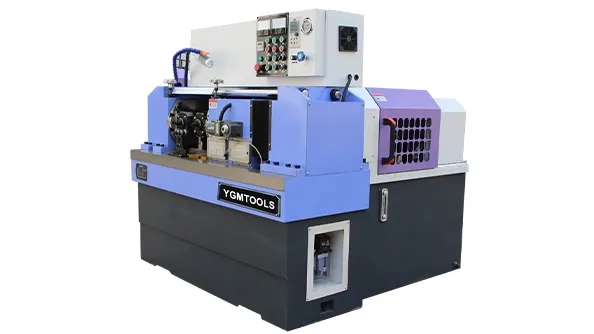
-
 Afrikaans
Afrikaans -
 Albanian
Albanian -
 Amharic
Amharic -
 Arabic
Arabic -
 Armenian
Armenian -
 Azerbaijani
Azerbaijani -
 Basque
Basque -
 Belarusian
Belarusian -
 Bengali
Bengali -
 Bosnian
Bosnian -
 Bulgarian
Bulgarian -
 Catalan
Catalan -
 Cebuano
Cebuano -
 Corsican
Corsican -
 Croatian
Croatian -
 Czech
Czech -
 Danish
Danish -
 Dutch
Dutch -
 English
English -
 Esperanto
Esperanto -
 Estonian
Estonian -
 Finnish
Finnish -
 French
French -
 Frisian
Frisian -
 Galician
Galician -
 Georgian
Georgian -
 German
German -
 Greek
Greek -
 Gujarati
Gujarati -
 Haitian Creole
Haitian Creole -
 hausa
hausa -
 hawaiian
hawaiian -
 Hebrew
Hebrew -
 Hindi
Hindi -
 Miao
Miao -
 Hungarian
Hungarian -
 Icelandic
Icelandic -
 igbo
igbo -
 Indonesian
Indonesian -
 irish
irish -
 Italian
Italian -
 Japanese
Japanese -
 Javanese
Javanese -
 Kannada
Kannada -
 kazakh
kazakh -
 Khmer
Khmer -
 Rwandese
Rwandese -
 Korean
Korean -
 Kurdish
Kurdish -
 Kyrgyz
Kyrgyz -
 Lao
Lao -
 Latin
Latin -
 Latvian
Latvian -
 Lithuanian
Lithuanian -
 Luxembourgish
Luxembourgish -
 Macedonian
Macedonian -
 Malgashi
Malgashi -
 Malay
Malay -
 Malayalam
Malayalam -
 Maltese
Maltese -
 Maori
Maori -
 Marathi
Marathi -
 Mongolian
Mongolian -
 Myanmar
Myanmar -
 Nepali
Nepali -
 Norwegian
Norwegian -
 Norwegian
Norwegian -
 Occitan
Occitan -
 Pashto
Pashto -
 Persian
Persian -
 Polish
Polish -
 Portuguese
Portuguese -
 Punjabi
Punjabi -
 Romanian
Romanian -
 Russian
Russian -
 Samoan
Samoan -
 Scottish Gaelic
Scottish Gaelic -
 Serbian
Serbian -
 Sesotho
Sesotho -
 Shona
Shona -
 Sindhi
Sindhi -
 Sinhala
Sinhala -
 Slovak
Slovak -
 Slovenian
Slovenian -
 Somali
Somali -
 Spanish
Spanish -
 Sundanese
Sundanese -
 Swahili
Swahili -
 Swedish
Swedish -
 Tagalog
Tagalog -
 Tajik
Tajik -
 Tamil
Tamil -
 Tatar
Tatar -
 Telugu
Telugu -
 Thai
Thai -
 Turkish
Turkish -
 Turkmen
Turkmen -
 Ukrainian
Ukrainian -
 Urdu
Urdu -
 Uighur
Uighur -
 Uzbek
Uzbek -
 Vietnamese
Vietnamese -
 Welsh
Welsh -
 Bantu
Bantu -
 Yiddish
Yiddish -
 Yoruba
Yoruba -
 Zulu
Zulu
thread rolling equipment
The Importance of Thread Rolling Equipment in Modern Manufacturing
Thread rolling equipment plays a pivotal role in the manufacturing sector, specifically in the production of threaded fasteners and components. This process is essential for creating precise and durable threads that are critical for ensuring the integrity and reliability of mechanical assemblies. Understanding the technology and benefits associated with thread rolling equipment can provide valuable insights into its significance in various industries.
What is Thread Rolling?
Thread rolling is a cold-forming process that creates external threads on cylindrical workpieces. This technique involves the use of two or more dies that exert pressure on the material, causing it to flow and form the desired thread profile. Unlike traditional machining methods that remove material to achieve the required shape, thread rolling retains the majority of the original material, leading to increased strength and durability of the finished product.
Advantages of Thread Rolling Equipment
One of the primary advantages of thread rolling equipment is its ability to produce threads with superior tensile strength. The cold working process enhances the grain structure of the material, resulting in a denser, more robust part. This is particularly crucial in applications where high strength is a prerequisite, such as automotive, aerospace, and heavy machinery industries.
In addition to strength, thread rolling also enhances the overall surface finish of the threads. The process leaves behind a smooth, polished surface that minimizes friction and wear when components are mated together. This improved finish can lead to better performance and longevity of fasteners and threaded parts.
Another significant benefit is the efficiency of thread rolling equipment. The process is highly automated, allowing for rapid production rates and lower labor costs. High-speed rolling machines can produce thousands of threads per hour, making them ideal for mass production scenarios. Furthermore, the reduced scrap rate inherent in thread rolling contributes to lower material costs, making it an economical choice for manufacturers.
thread rolling equipment

Types of Thread Rolling Equipment
Thread rolling machines come in various configurations to accommodate different production needs. The two most common types are flat dies and cylindrical dies. Flat die machines are typically used for producing long threads and can be configured for multiple rolls, which increases productivity. On the other hand, cylindrical die machines are ideal for shorter, more precise threads.
Advanced models of thread rolling equipment often integrate computerized controls that optimize the rolling process. These machines can monitor parameters such as pressure and speed in real-time, ensuring consistent quality and reducing the risk of defects. The ability to program different thread profiles also enhances flexibility, allowing manufacturers to adapt quickly to changing market demands.
Applications of Thread Rolling Equipment
The applications of thread rolling equipment are vast and varied. Industries such as automotive heavily rely on threaded components for assembling engines, transmissions, and chassis. In the aerospace sector, thread rolling is utilized for critical fasteners that secure aircraft components under extreme conditions. Additionally, the construction industry benefits from strong and reliable threaded rods and anchors produced through thread rolling processes.
Conclusion
In conclusion, thread rolling equipment is an integral part of the modern manufacturing landscape. Its ability to produce high-strength, durable, and precise threaded components makes it invaluable across various industries. With advancements in technology and automation, thread rolling continues to evolve, offering efficiency and versatility to meet the ever-changing demands of manufacturers. As industries strive for greater quality and performance, the importance of investing in high-quality thread rolling equipment cannot be overstated. This process ensures that the components that drive innovation and functionality in our daily lives are built to last.
